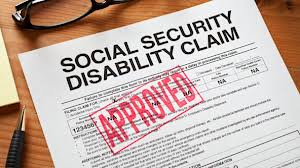Disabled state: NM disability numbers up 65.2 percent in 10 years

NEW MEXICO’S SPIKE: The number of New Mexico workers receiving disability payments from the government has spiked 65.2 percent in a 10-year period.
By Rob Nikolewski │ New Mexico Watchdog
SANTA FE, N.M.— The number of Americans receiving disability payments from the government is at an all-time high, and the percentage of New Mexicans on disability is running well ahead of the national rate.
A review of the national and statewide numbers by New Mexico Watchdog shows, in the space of a decade, the number of workers on disability in the Land of Enchantment has jumped 65.2 percent.
Earlier this week, the Social Security Administration released its national figures for the end of April, showing the number of disability insurance recipients across the country hit 10.99 million.
That number — made up of 8.9 million disabled workers, 153,475 spouses of disabled workers and 1.9 million children of disabled workers — is an all-time high:
The statistics for individual states will not be updated until October, but New Mexico Watchdog looked at the most recent numbers available. As of December 2012, New Mexico had 62,286 workers on disability.
That represents a 4.1 percent increase over the previous year.
Going back over a 10-year period, New Mexico has seen a 65.2 percent increase in workers receiving disability payments:
That’s nearly 15 points above the national average. Between 2003 and 2012, the total number of workers receiving disability in the U.S. rose 50.3 percent.
“The long-term (disability insurance) program growth was predicted many years ago and is driven, for example, by the aging of the baby boom generation and the fact that more women have joined the labor force and have become eligible for benefits,” Sarah Schultz-Lackey, regional communications director in Dallas for the Social Security Administration, said in an email to New Mexico Watchdog.
But experts say there are other factors at work because the percentage has increased faster than the population has aged.
Michael D. Tanner, a senior fellow at the Cato Institute, a free-market think tank based in Washington D.C., points to three things in particular.
First, older workers are having a hard time finding jobs.
“It’s very difficult for someone who’s, say, 60 years old, to get hired again,” Tanner said in a telephone interview. “They’re kind of waiting around until they’re eligible for Social Security and Medicare and they’re using disability insurance as sort of a way station.”
Second, Tanner says some administrative judges are lax in awarding disability claims that are appealed.
“Essentially, it’s a two-step process,” Tanner said. “You apply, you either get accepted or denied by the Social Security Administration, which is relatively strict. If you lose, you’re allowed to appeal to these special administrative judges.”
And third, what’s considered a disability has been greatly expanded since the program was created in 1956.
“Twenty years ago, disability was primarily heart disease, cancer, things like that which are pretty clear diagnoses,” Tanner said. “Today, the leading two causes of disability are stress and back injuries, which are vague.”
To make matters worse, the disability trust fund is running out of money. A government report released last year estimated the fund could be completely depleted in as little as two years from now.
What can be done?
Tanner calls for a crackdown on administrative judges who essentially rubber-stamp claims. “Some of these folks, year after year, are in the 98 percent range.” Tanner said.
Tanner suggests the government should create a “partially disabled” category.
“We need to move away from this all or nothing approach so some people on disability can work and earn some money and get disability payments as a supplement if they can’t work full-time, for example,” Tanner said.
Contact Rob Nikolewski at rnikolewski@watchdog.org and follow him on Twitter @robnikolewski








